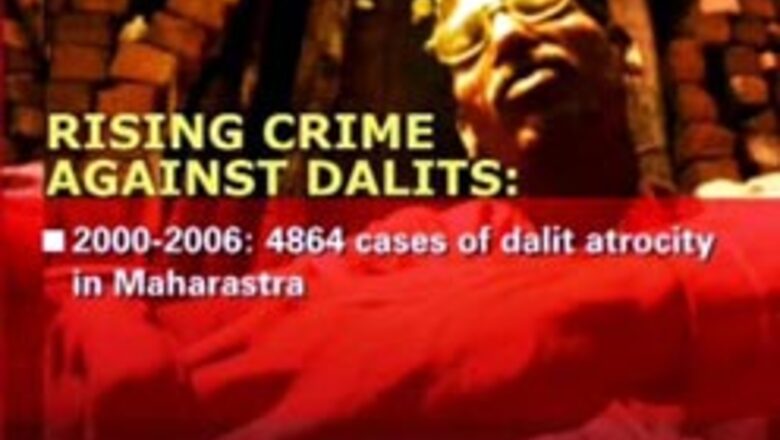
views
Mumbai: Last week, the shocking incident of a school principal in Maharashtra’s Vidarbha town sprinkling cow urine on his students to purify them from the touch of Dalits had shocked the nation.
While the principal was later arrested, the fact that such an incident should have happened in Ambedkar's home state left many aghast.
However, the fact remains that the number of cases of caste-based atrocities in Maharashtra are on the rise while the conviction rate in the state is almost negligible.
Every year, lakhs of Dalits converge at Babasaheb Ambedkar's final resting place – Chaityabhoomi in hordes to thank him for “liberating” them.
But liberation is still a distant dream for many. When they return home to their small towns, they are often "taught a lesson" to keep in check any ideas of equality they might nurture.
While one such lesson was taught just last week – when the school incident occurred – others like Khairlanji killings remain a grim reminder.
"The root is in the mindset of society. The casteist mindset is operating, so all this is happening," says Pravin More of the National Campaign for Dalit Human Rights.
According to information obtained by NCDHR through the Right to Information Act:
- Between 2000 and 2006, 4,864 cases were filed under the Prevention of Atrocity Act for Scheduled Castes in the state.
- Over this six-year-period, such cases have seen an alarming 80 per cent rise.
- However, there were less than 200 convictions, a conviction rate of just one in every 25.
Activists say the conviction rate is low, because of hesitation in using the stringent Atrocity Act. The police agree, but say efforts are being made.
"It is very sad that conviction rate is low. But that is not just in Maharashtra that is every where else as well," says Maharashtra DGP P S Pasricha.
Police are now asking for fast-track courts and have appointed a senior officer to look into cases of Dalit atrocity.
But one thing is clear. Till anti-atrocity laws are more strongly enforced, visits to Chaityabhoomi will have no real significance.


















Comments
0 comment